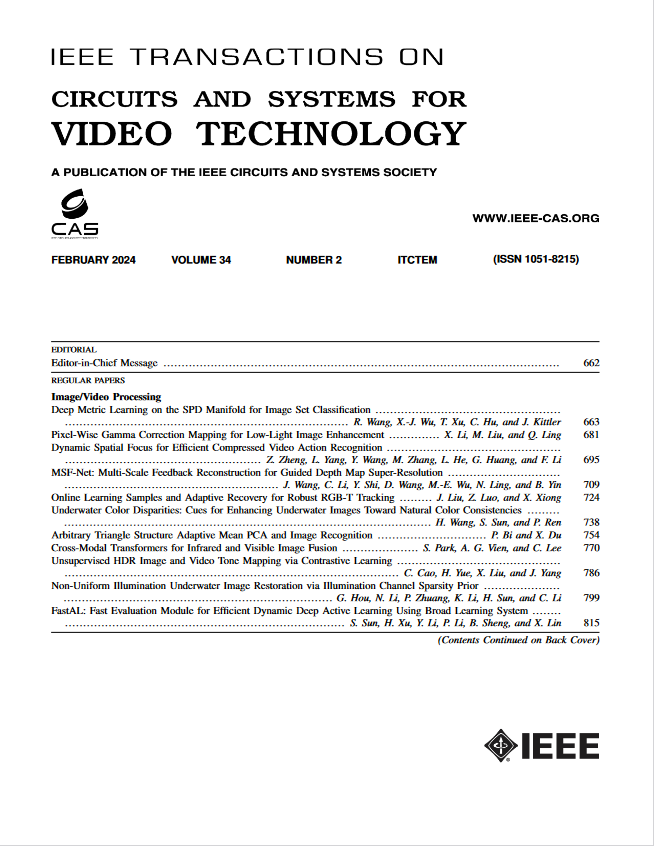用于无监督图匹配的对比学习网络
IF 8.3
1区 工程技术
Q1 ENGINEERING, ELECTRICAL & ELECTRONIC
IEEE Transactions on Circuits and Systems for Video Technology
Pub Date : 2024-09-10
DOI:10.1109/TCSVT.2024.3457575
引用次数: 0
摘要
本文章由计算机程序翻译,如有差异,请以英文原文为准。
Contrastive Learning Network for Unsupervised Graph Matching
Graph matching aims to establish node correspondences between graphs, which is a classic combinatorial optimization problem. In recent years, (deep) learning-based methods have emerged as a superior alternative to traditional graph matching solvers. However, these methods typically rely on node-level correspondence labels, which can be prohibitively expensive or unrealistic. Inspired by contrastive learning that is a prevalent paradigm for self-supervised representation learning, we develop a Contrastive Learning Network for Unsupervised Graph Matching (CUGM), which is an end-to-end differentiable pipeline to learn node permutations. Specifically, we propose three-level augmentation including raw image augmentation, graph augmentation and model augmentation for generating diverse enough contrastive views to enrich training instances. Then a contrastive learning network is constructed to capture the higher-order structural information in graphs and learn the final node representations for yielding the affinity matrix to directly solve a linear assignment problem. More importantly, we propose a node-level contrastive loss with false negative cancellation for optimizing the whole network to extract the tailored node feature representations to improve graph matching accuracy. Experimental results on standard graph matching benchmarks demonstrate that our end-to-end unsupervised method achieves the competitive performance compared with state-of-the-art supervised and unsupervised graph matching methods.
求助全文
通过发布文献求助,成功后即可免费获取论文全文。
去求助
来源期刊
CiteScore
13.80
自引率
27.40%
发文量
660
审稿时长
5 months
期刊介绍:
The IEEE Transactions on Circuits and Systems for Video Technology (TCSVT) is dedicated to covering all aspects of video technologies from a circuits and systems perspective. We encourage submissions of general, theoretical, and application-oriented papers related to image and video acquisition, representation, presentation, and display. Additionally, we welcome contributions in areas such as processing, filtering, and transforms; analysis and synthesis; learning and understanding; compression, transmission, communication, and networking; as well as storage, retrieval, indexing, and search. Furthermore, papers focusing on hardware and software design and implementation are highly valued. Join us in advancing the field of video technology through innovative research and insights.

 求助内容:
求助内容: 应助结果提醒方式:
应助结果提醒方式:


